
Roots
Our hair, a silent storyteller, bears the whispers of the environments it inhabits. From the sun-drenched savannas where ancestral braids caught the light, to the misty rainforests where coils held the morning dew, hair has always been in a quiet, yet profound, dialogue with its surroundings. This intimate connection shapes its very being, particularly its ability to draw in and release water. To truly understand this interaction, we must first descend into the foundational structure of a single strand, exploring its hidden chambers and protective layers.
A hair strand, far from a simple filament, stands as a marvel of biological architecture. At its heart lies the Cortex, a bundle of keratin proteins responsible for hair’s strength, elasticity, and even its unique curl pattern. Encasing this resilient core are layers of flat, overlapping cells, much like shingles on a roof.
This is the Cuticle, the hair’s outermost shield, acting as its primary gatekeeper to the world. The arrangement and condition of these cuticle scales dictate how readily water enters or exits the hair shaft.

The Hair’s Outer Shield ❉ Cuticle Dynamics
The cuticle, though microscopic, holds immense sway over hair’s water absorption. In healthy hair, these scales lie flat and smooth, presenting a relatively impermeable surface. This natural alignment resists excessive water entry, allowing for a balanced moisture exchange.
When these scales are lifted, chipped, or absent, the hair’s inner cortex becomes more exposed, eager to absorb water, but also prone to losing it just as quickly. This condition, often termed high porosity, makes hair feel dry and rough, a stark contrast to the supple feel of strands with an intact cuticle.
The cuticle, a hair strand’s protective outer layer, governs its capacity for water absorption and retention.

The Inner Core ❉ Cortex and Moisture Memory
Beyond the cuticle, the cortex itself plays a central role in how hair holds water. The keratin proteins within the cortex contain various chemical groups that can form temporary bonds with water molecules. These are primarily Hydrogen Bonds, which allow water to permeate the hair structure. When hair absorbs water, these bonds form, causing the hair shaft to swell.
As the water evaporates, these bonds break, and the hair returns to its original state. This swelling and contracting, a fundamental property of hair, is what gives it its flexibility and resilience. However, this constant dance can also become a source of vulnerability when environmental factors push it beyond its natural rhythm.
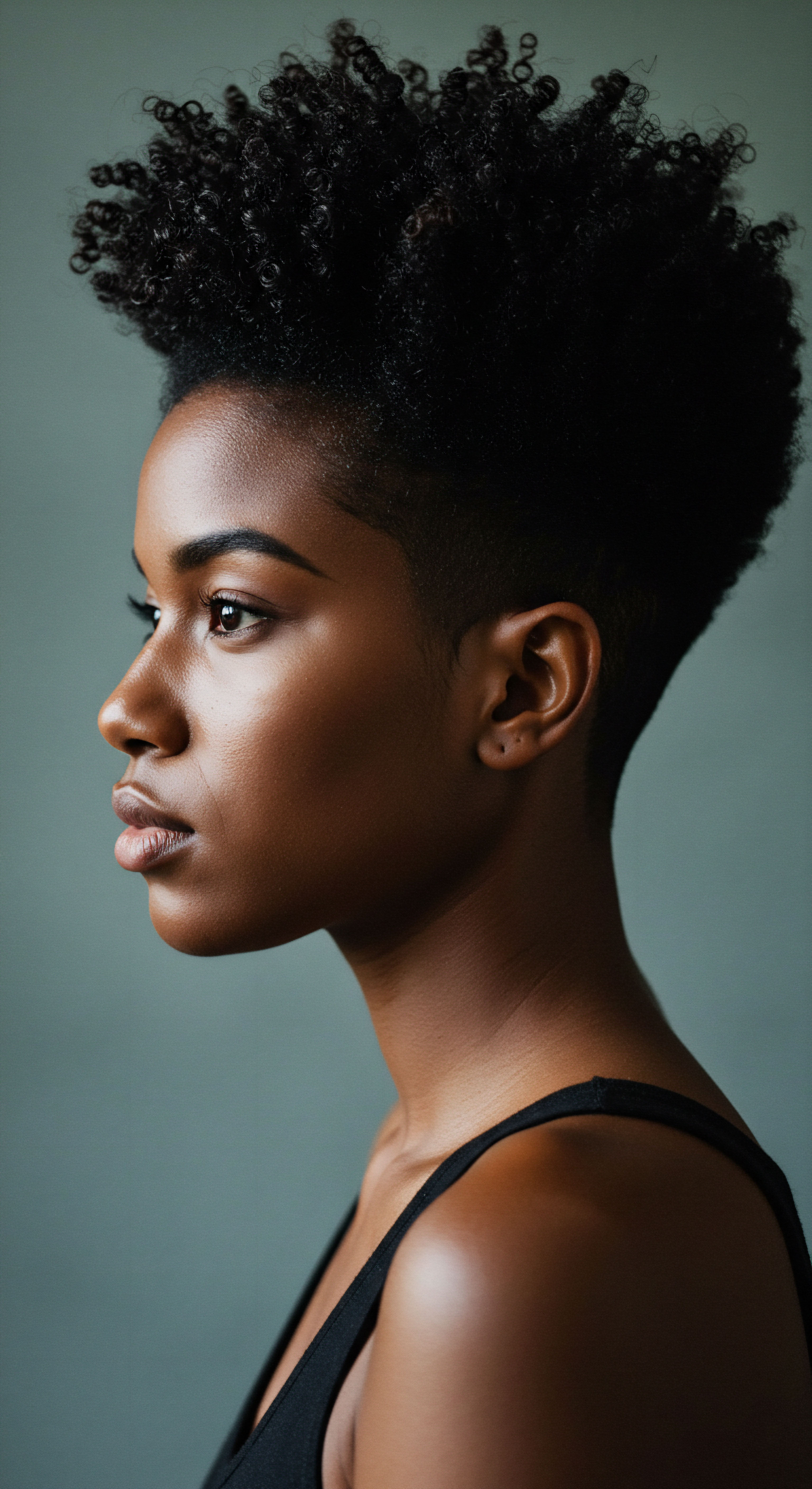
Water’s Embrace ❉ A Molecular Dance
The affinity hair has for water, known as its Hydrophilicity, varies greatly among individuals and hair types. Textured hair, with its inherent twists and turns, often presents naturally raised cuticle scales at the points of curvature. This structural characteristic means textured hair can be inherently more receptive to water, yet also more prone to moisture loss, than straighter hair types. Understanding this foundational interaction with water, a molecular embrace and release, sets the stage for comprehending how external forces can disrupt this delicate balance.
| Hair Component Cuticle |
| Role in Water Absorption Outer protective layer, controls water entry/exit. |
| Impact of Damage Lifted scales lead to increased porosity, faster absorption, and faster loss. |
| Hair Component Cortex |
| Role in Water Absorption Inner core, contains keratin proteins that bind water. |
| Impact of Damage Protein degradation reduces water-binding capacity and strength. |
| Hair Component 18-MEA Layer |
| Role in Water Absorption Hydrophobic lipid layer on cuticle surface. |
| Impact of Damage Loss makes hair more hydrophilic, vulnerable to external factors. |
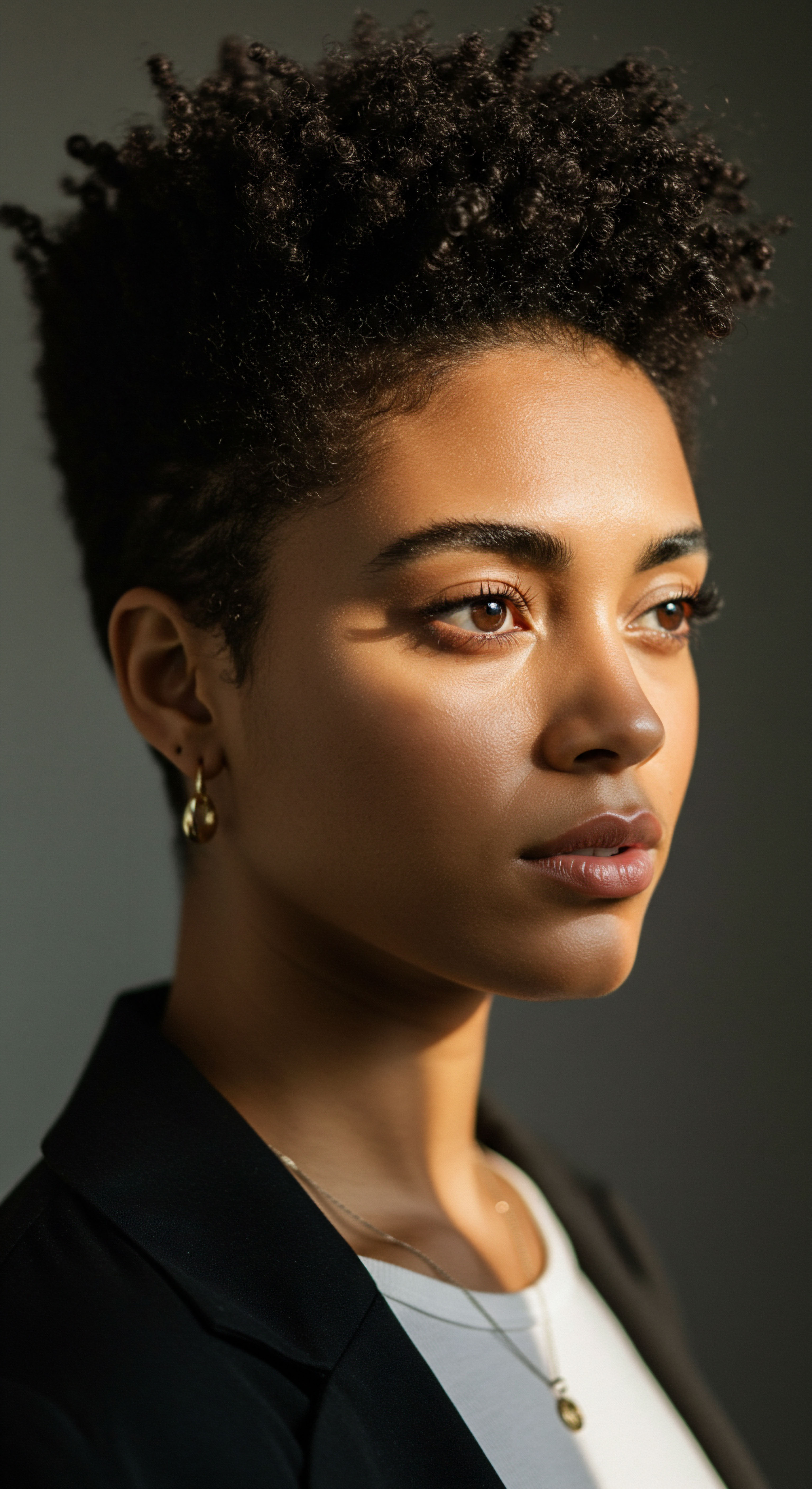
Ritual
Each morning, as we awaken, our hair presents itself, a canvas reflecting the night’s repose and the day’s atmospheric promise. The subtle changes we observe – a little more bounce, a touch more frizz, or a surprising thirst – are often the immediate responses to the environment’s unseen hand. Our daily rituals of care, whether intuitive or learned, become our gentle guidance for these responses. Moving from the hair’s inherent design, we now turn to the pervasive environmental elements that directly influence its water absorption, requiring our mindful attention.
The air around us, a constant companion, carries profound implications for hair’s moisture equilibrium. Its water content, or Humidity, directly dictates how much water hair will draw in or release. In a humid climate, hair, especially textured hair with its predisposition for water, can absorb an abundance of moisture from the air. While this might sound beneficial, an excess can lead to a phenomenon known as hygral fatigue.
This refers to the stress placed on hair fibers from repeated and excessive swelling when wet, and contracting when dry. Over time, this constant expansion and shrinkage can weaken the hair’s protein structure, leading to decreased elasticity and increased vulnerability to breakage.

The Air We Breathe ❉ Humidity’s Gentle Touch and Harsh Grasp
Consider the paradox of humidity ❉ it can bring life to curls, defining them with a soft, dewy presence, yet it can also usher in an unwelcome frizz, a visible sign of the hair striving to balance its internal moisture with the external atmosphere. When the air is saturated with water vapor, hair, particularly if its cuticle is already somewhat raised, acts like a sponge, rapidly drawing in water. This rapid swelling can cause the cuticle scales to lift further, leading to the familiar fluffy halo. Conversely, in very dry conditions, hair will readily release its internal moisture to the surrounding air, leading to dehydration and a brittle feel.
- High Humidity ❉ Hair absorbs water, swells, potentially leading to hygral fatigue and frizz.
- Low Humidity ❉ Hair loses water to the dry air, resulting in dehydration, brittleness, and static.
- Temperature Extremes ❉ Hot temperatures accelerate water evaporation, while cold, dry air can strip moisture.

The Dry Spell ❉ Arid Climates and Hair’s Thirst
In arid environments, where the air holds minimal moisture, hair faces a constant challenge to retain its hydration. The dry air acts as a potent desiccating agent, drawing water directly from the hair shaft. This can leave strands feeling parched, stiff, and prone to tangling.
The hair’s inherent capacity to absorb water is still present, but the external conditions mean it is perpetually in a state of seeking moisture, often without sufficient supply. This ongoing struggle can compromise the hair’s integrity over time, making it more susceptible to damage from styling and manipulation.
Hair’s response to atmospheric humidity is a delicate dance between absorption and release, impacting its elasticity and susceptibility to damage.
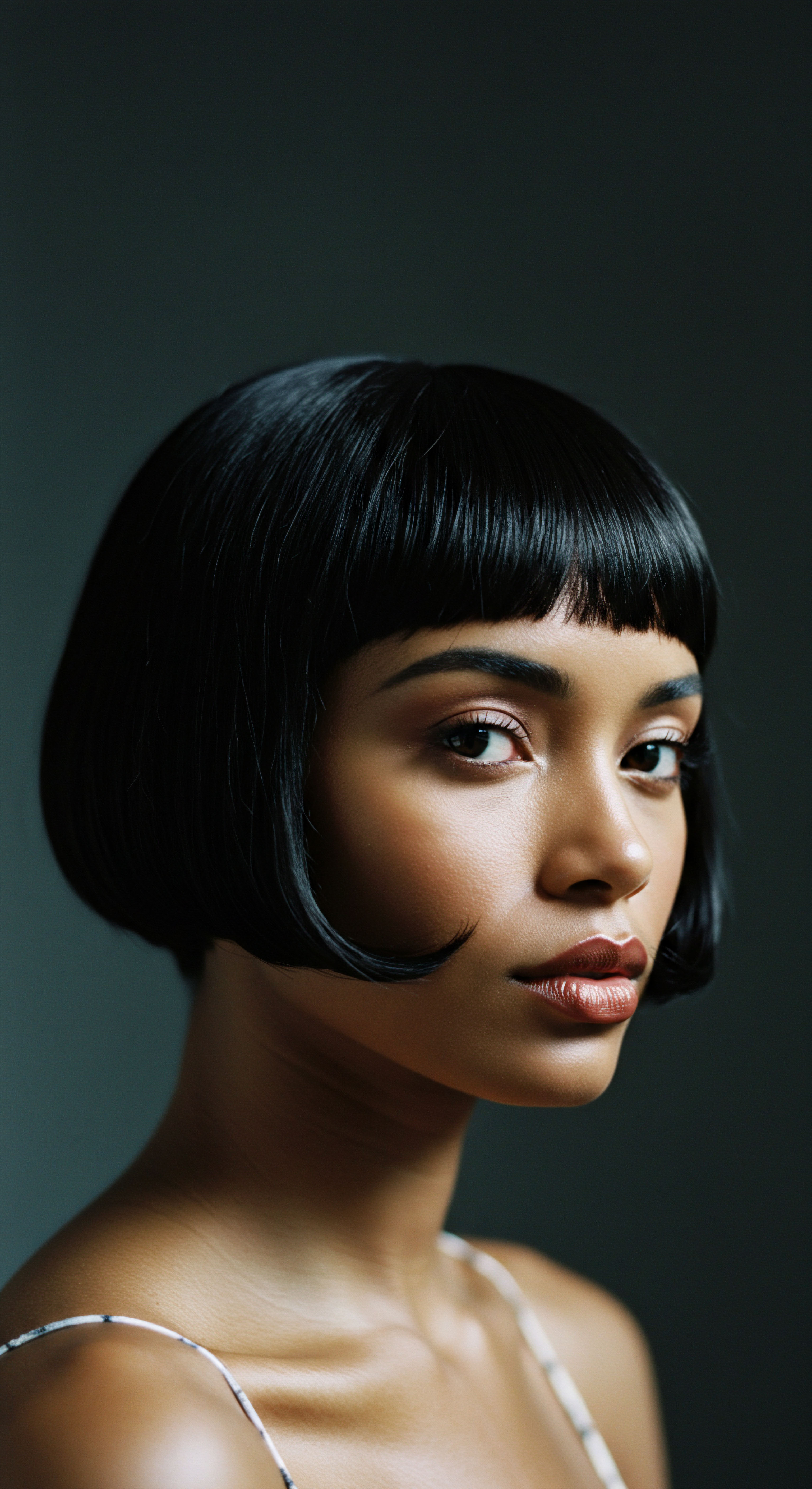
Thermal Shifts ❉ Hot and Cold’s Influence
Temperature, while not directly altering hair’s water absorption capacity, significantly influences the rate at which water interacts with the hair. Higher temperatures accelerate the evaporation of water from the hair shaft. This means that even in moderately humid conditions, if the temperature is high, hair can still experience moisture loss due to the rapid drying process.
Conversely, very cold, dry air can also be detrimental, as it often holds little moisture, prompting hair to release its own. The combined effect of cold and dryness can leave hair feeling brittle and static-prone.
For those living in climates with significant seasonal shifts, adapting hair care practices becomes a mindful ritual. The products and techniques that serve hair well in a humid summer might be entirely inadequate for a dry winter. Understanding these direct environmental influences empowers us to select products that either seal moisture in or allow for more balanced absorption, ensuring hair remains supple and resilient.

Relay
Beyond the immediate embrace of air and temperature, our hair exists within a broader environmental narrative, one woven with the unseen threads of urban life and the vast expanse of the natural world. These less apparent, yet equally potent, environmental factors contribute to hair’s story, altering its very ability to absorb and hold water in ways that are often cumulative and profound. This section journeys into these intricate connections, drawing on scientific observations and real-world data to illuminate the deeper conversation between hair and its surroundings.
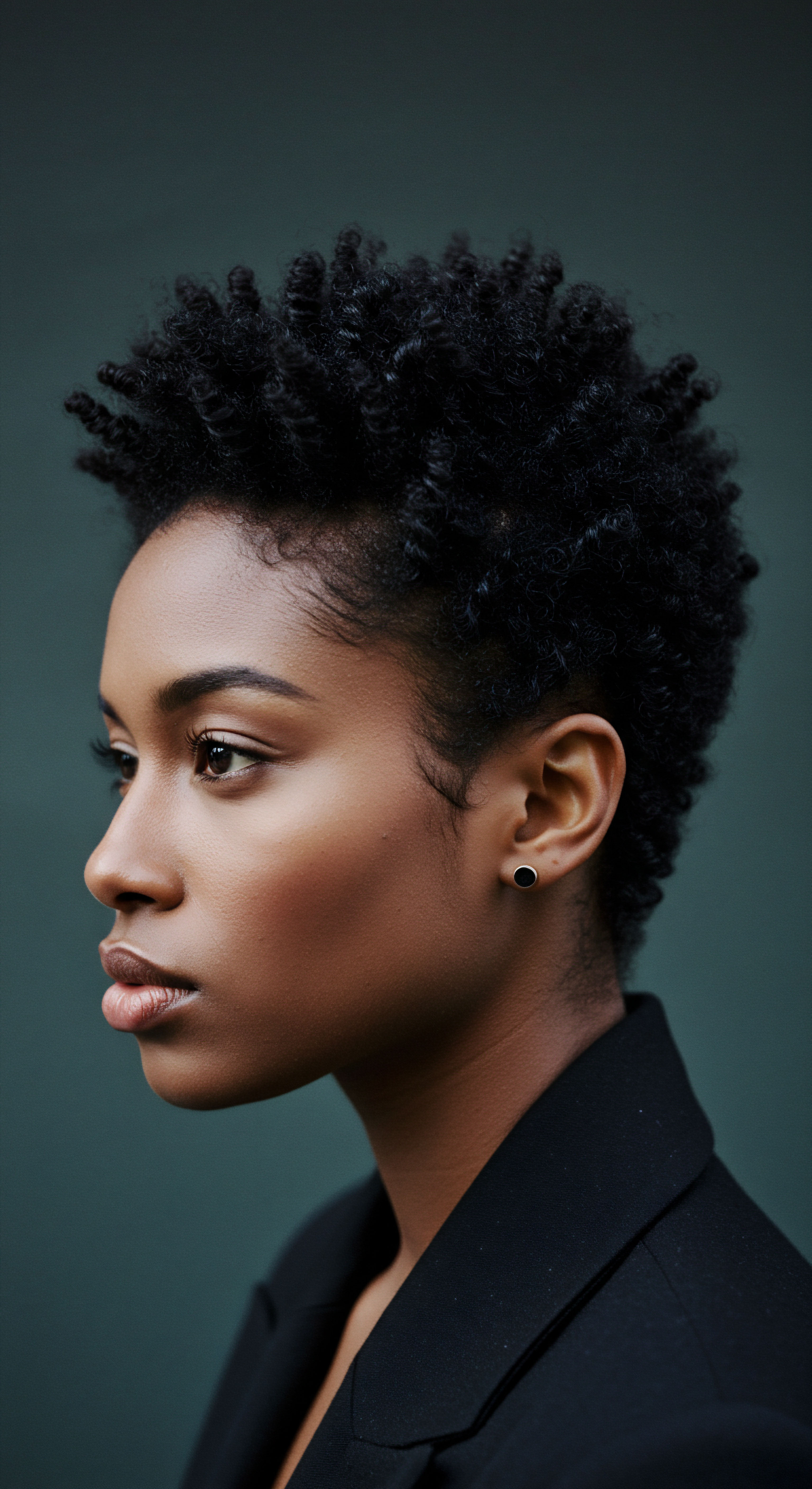
Invisible Adversaries ❉ Atmospheric Pollutants
The air we breathe carries more than just moisture; it transports a complex cocktail of pollutants that settle on hair fibers and scalp. Particulate matter (PM), including fine particles like PM2.5, can adhere to the hair surface, dulling its natural sheen and hindering moisture absorption by creating a physical barrier. However, the impact extends beyond mere surface coating. Research indicates that pollutants, particularly polycyclic aromatic hydrocarbons (PAHs) and other oxidizing agents, can penetrate the hair cuticle and cause chemical damage to its proteins and lipids.
A study simulating polluted environments, for instance, used cigarette smoke exposure to show how virgin hair experienced damage to its cuticles, protein degradation, and a more hydrophilic (water-loving) surface. This increased hydrophilicity means the hair surface, normally protected by a hydrophobic lipid layer (18-MEA), becomes more vulnerable, absorbing water rapidly but also losing it with ease. This oxidative damage to hair proteins, specifically the carbonylation of keratins, has been observed even at levels equivalent to daily exposure in polluted cities. Such alterations to the protein structure directly compromise hair’s capacity to regulate its internal water content, leading to persistent dryness and brittleness.
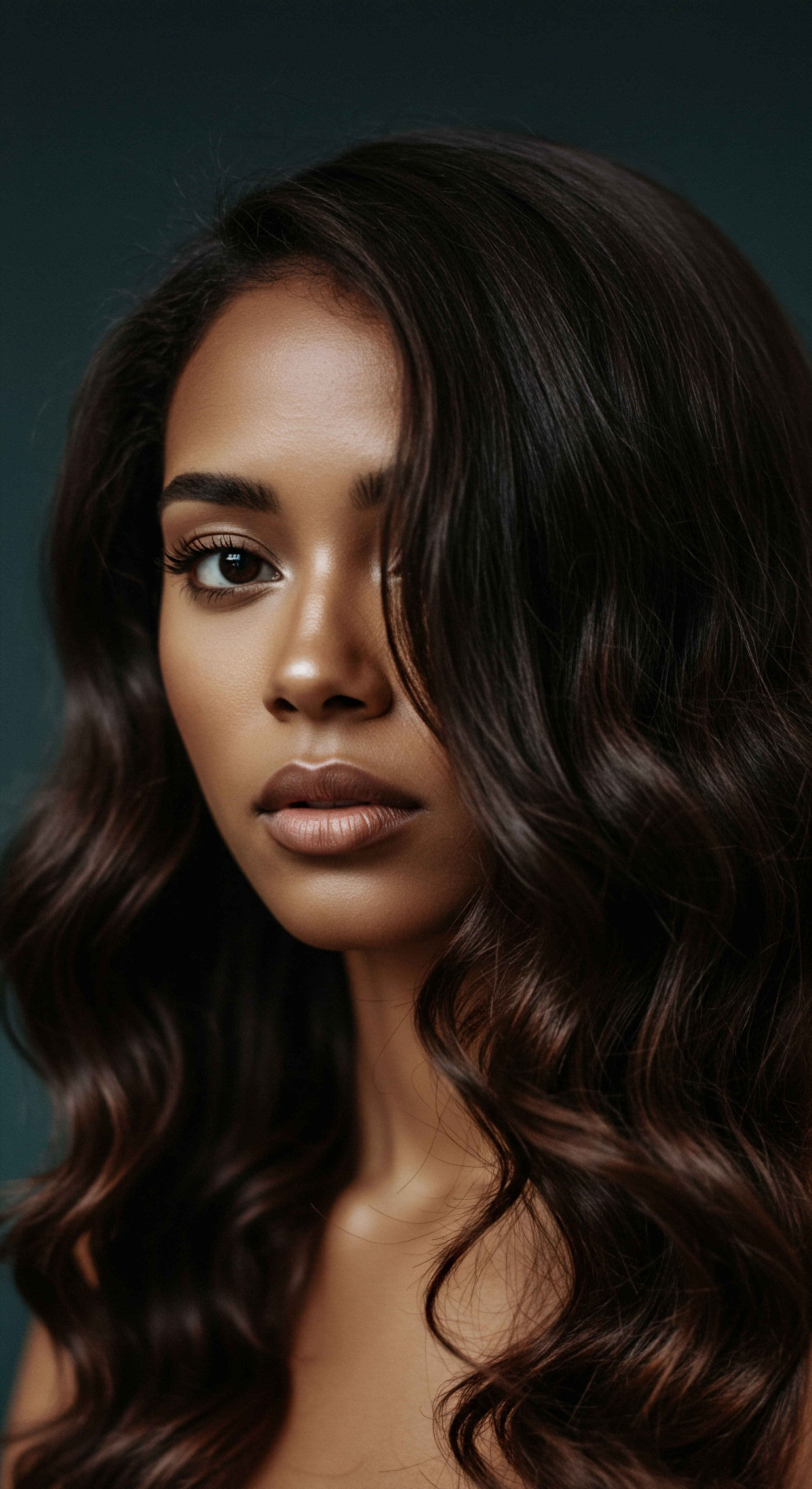
Sun’s Unseen Caress ❉ Ultraviolet Rays and Hair’s Vulnerability
The sun, a source of life, also emits ultraviolet (UV) radiation, a powerful environmental factor that silently degrades hair’s structural integrity. Both UVA and UVB rays contribute to this degradation. UVB radiation primarily affects the hair cuticle and melanin pigment, while UVA causes deeper chemical changes.
UV exposure can deplete hair’s natural moisture content by disrupting the lipid layer that helps retain water within the hair shaft. This disruption leads to increased porosity, making hair more susceptible to water absorption, yet less able to hold onto that water, resulting in dryness and brittleness.
One particularly insidious mechanism of UV damage, especially in wet hair, involves the production of Hydroxy Radicals. These highly reactive oxygen species, formed from unsaturated fatty acids in the hair upon UV exposure, create microscopic holes between the cuticle layers. This micro-damage, invisible to the naked eye, compromises the cuticle’s protective barrier, leading to increased water uptake and subsequent loss, a cycle that contributes to split ends and breakage.
Beyond visible pollutants, UV radiation and water quality silently alter hair’s structure, affecting its fundamental interaction with water.
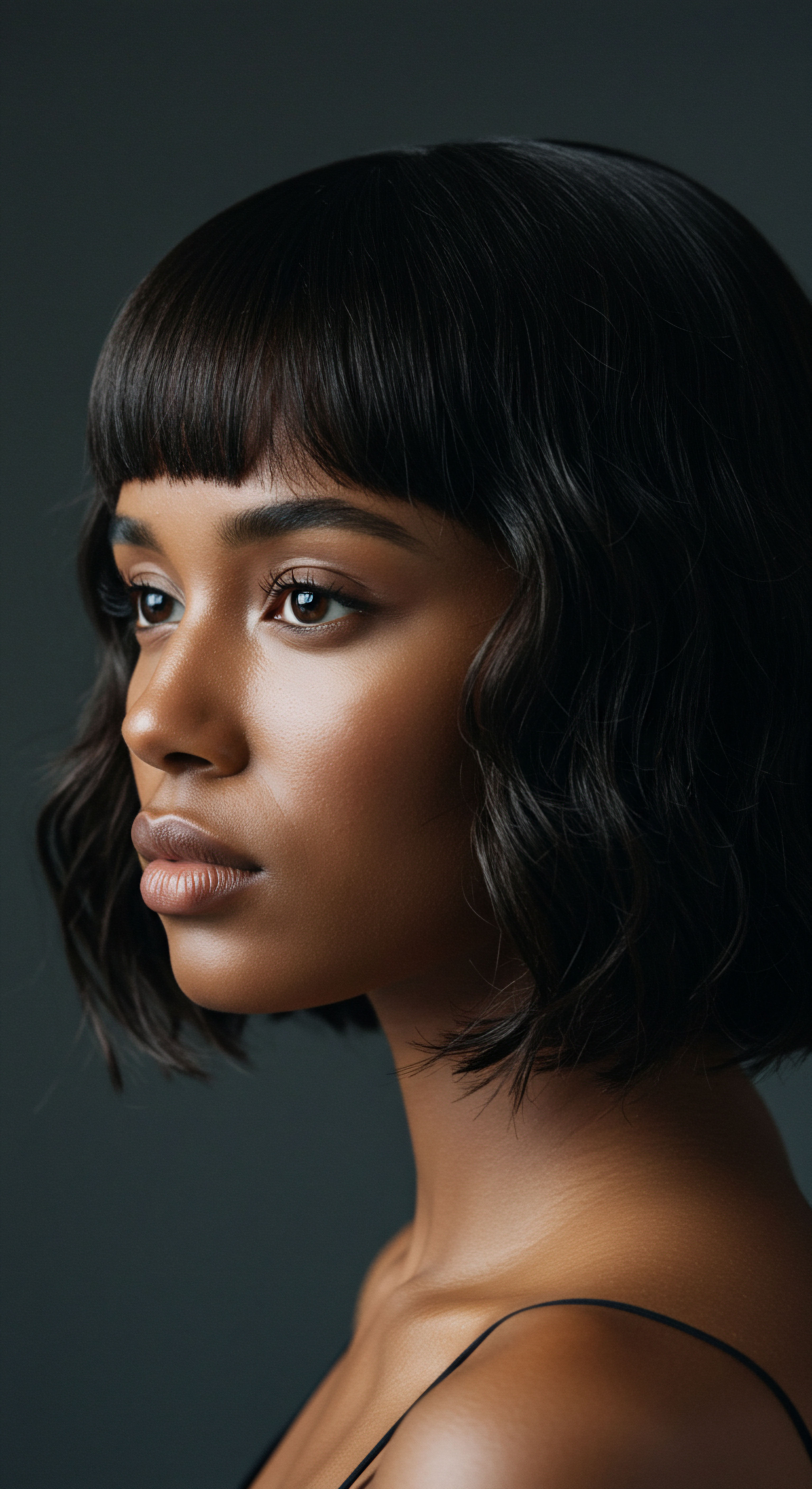
The Water We Wash With ❉ Mineral Deposits and Chemical Exposure
The very water we use for cleansing can also be a significant environmental factor. Hard Water, laden with minerals like calcium and magnesium, deposits these salts onto the hair shaft. This mineral accumulation creates a thin film that hinders moisture from entering the hair and can even alter its pH, increasing the negative electrical charge on the cuticles. This leads to increased friction between strands, a ruffled appearance, and a decrease in hair thickness over time.
While some studies suggest no significant difference in hair elasticity with hard water, others show a reduction in tensile strength. The presence of these mineral deposits on the hair surface and within the cuticle can impede hair’s ability to absorb beneficial conditioning agents and maintain proper hydration.
Consider the common experience of swimmers ❉ the distinctive scent of chlorine. This chemical, widely used in pools as a disinfectant, is a potent oxidizing agent. Chlorine dissolves the protective lipids and oils on hair, stripping away its natural moisture. Furthermore, chlorine molecules bond with hair proteins, weakening the hair shaft and leading to dryness, brittleness, and even discoloration.
The common advice to wet hair before swimming stems from the idea that saturated hair will absorb less chlorinated water, thereby reducing the chemical’s direct impact. While studies confirm chlorine’s damaging effects, particularly when combined with UV radiation, the extent to which pre-wetting fully mitigates absorption remains a subject of ongoing discussion within scientific circles.
Another less discussed atmospheric factor is Ozone. While beneficial in the upper atmosphere, ground-level ozone, often a component of smog, can also interact with hair. Studies indicate that ozone can cause oxidative action on hair, leading to physicochemical changes, including degradation of cuticle components and alterations to hair amino acids.
This oxidative stress can compromise the hair’s protective lipid layer, making it more prone to absorbing unwanted substances and losing its intrinsic moisture balance. Unwashed hair, with its accumulated natural oils, has been shown to have a higher ozone uptake, indicating a potential interaction between ozone and hair’s surface lipids.
| Environmental Factor Air Pollution (PM, PAHs) |
| Mechanism of Action Physical barrier, oxidative damage to proteins/lipids. |
| Impact on Water Absorption Increased hydrophilicity, compromised moisture regulation, leading to dryness. |
| Environmental Factor UV Radiation |
| Mechanism of Action Degrades lipids, forms hydroxy radicals, creates cuticle holes. |
| Impact on Water Absorption Increased porosity, rapid water absorption, poor water retention. |
| Environmental Factor Hard Water (Minerals) |
| Mechanism of Action Mineral deposits, alters pH, increases friction. |
| Impact on Water Absorption Hinders beneficial moisture absorption, leads to dryness and brittleness. |
| Environmental Factor Chlorine |
| Mechanism of Action Strips natural oils, oxidizes proteins. |
| Impact on Water Absorption Increased porosity, reduced moisture retention, brittleness. |
| Environmental Factor Ozone |
| Mechanism of Action Oxidative action, degrades cuticle components. |
| Impact on Water Absorption Compromised protective layer, altered moisture balance. |

Beyond the Strand ❉ Hair’s Environmental Story
The interplay of these environmental factors is complex and often synergistic. For example, UV radiation and air pollution can combine to cause even greater damage to hair proteins and lipids. The consequence of this constant environmental exposure is a hair fiber that struggles to maintain its natural moisture balance, becoming more porous, weaker, and less vibrant. Understanding these environmental influences, from the subtle shift in humidity to the invisible particulate matter, allows us to approach hair care with a more informed and gentle hand, recognizing that our strands are constantly adapting to the world around them.
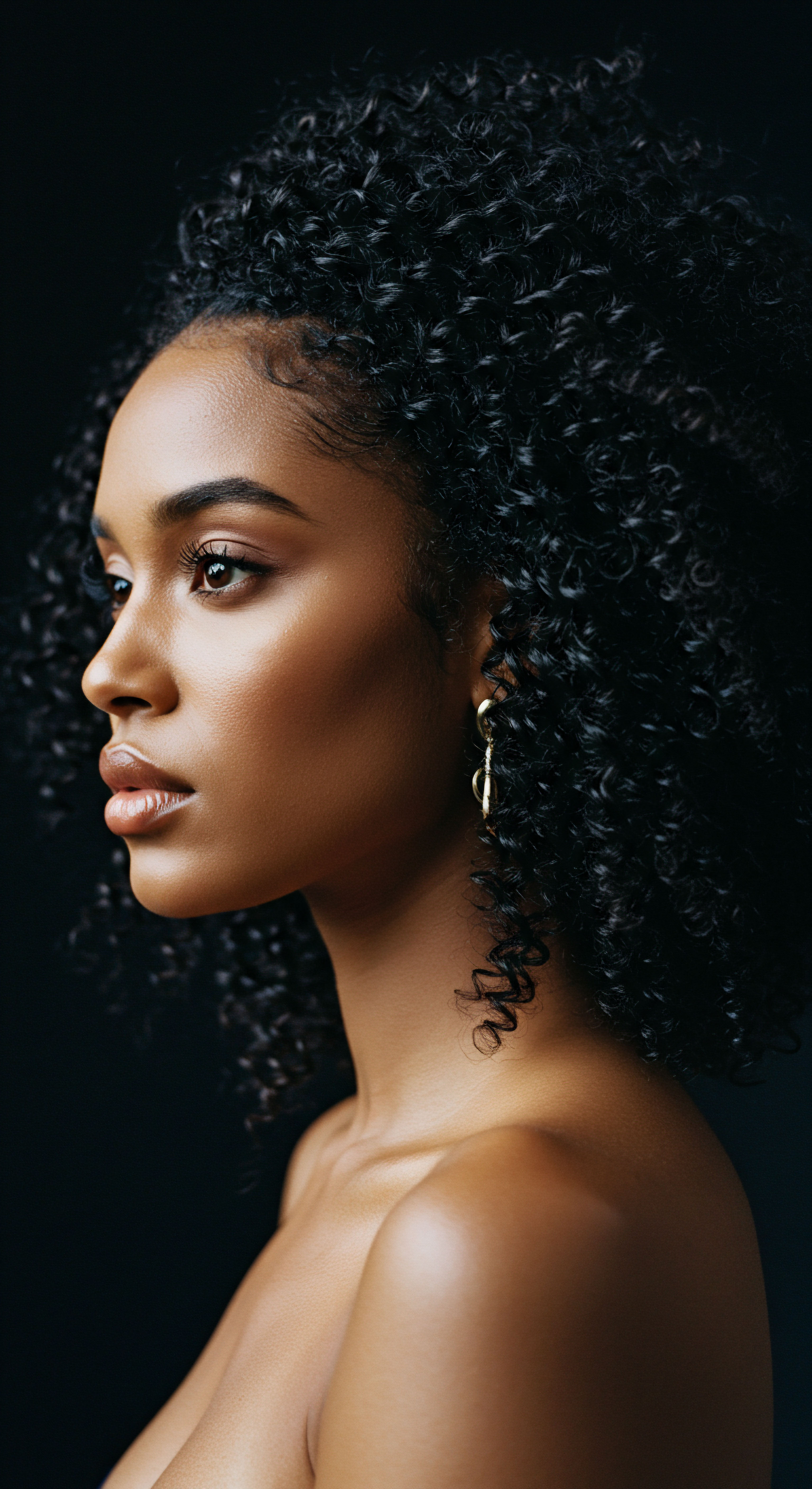
Reflection
As we close this exploration into the environmental forces that shape our hair’s interaction with water, a deeper appreciation for its delicate yet resilient nature emerges. Hair is not merely an adornment; it is a living chronicle, bearing the marks of the air it breathes, the sun it encounters, and the water it meets. This understanding moves beyond simple surface-level observations, inviting us to see each strand as a testament to adaptation, a silent communicator of its surroundings.
The conversation between hair and its environment is continuous, a subtle dialogue of absorption and release, strengthening and challenge. Recognizing the intricate dance of humidity, the unseen touch of pollutants, the pervasive presence of UV rays, and the mineral story held within our water allows us to approach our hair care with a newfound reverence and precision. This knowledge is not meant to inspire fear of the elements, but rather to empower us with the wisdom to protect, nourish, and celebrate our hair in all its forms, allowing it to thrive in harmony with the world around it.
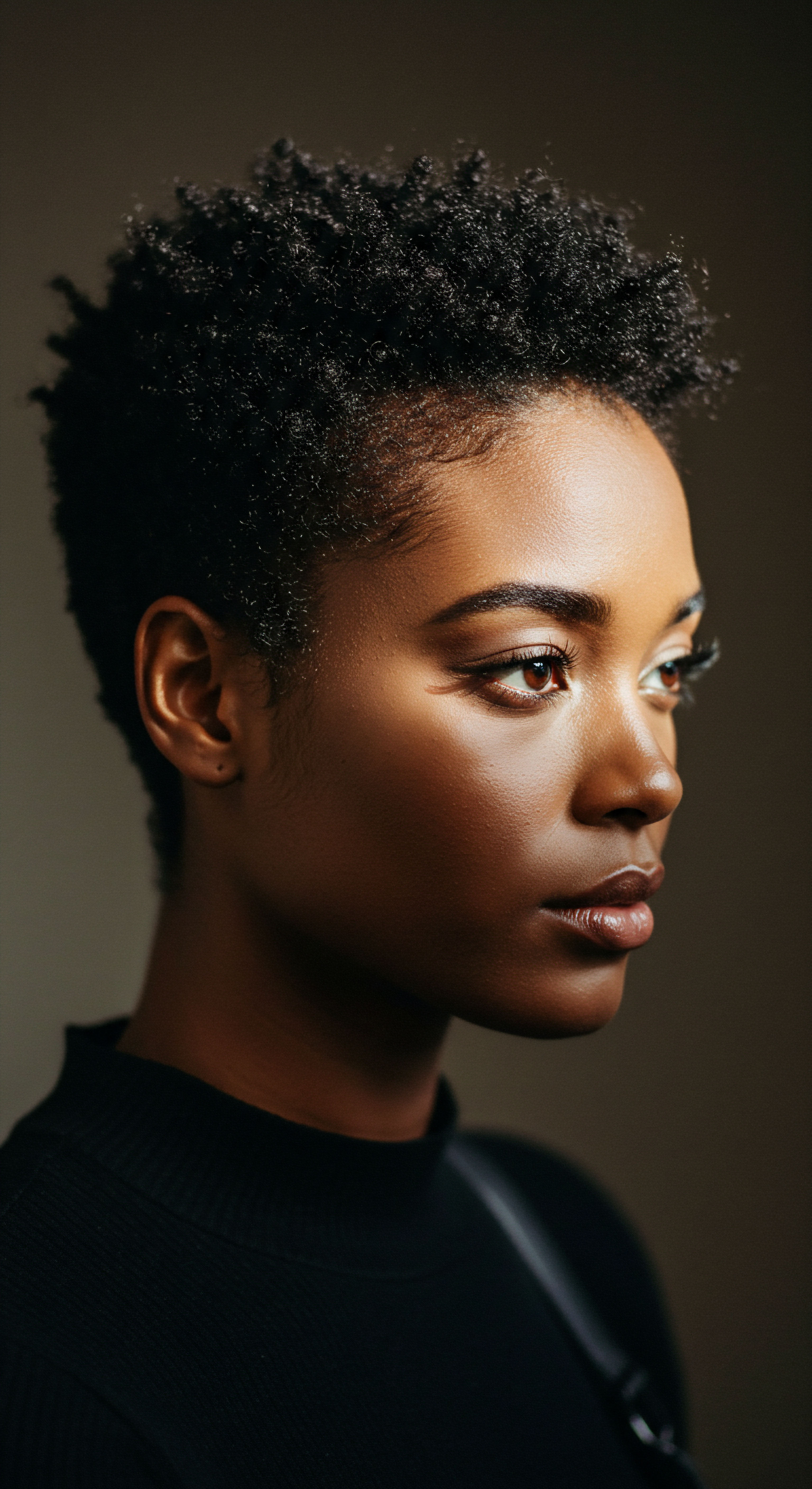
References
- 1. Han, L. et al. “Pollution Damage and Protection of Asian Hair.” Cosmetics, vol. 5, no. 1, 2018.
- 2. Robbins, C. R. Chemical and Physical Behavior of Human Hair. Springer, 2012.
- 3. Kim, S. K. et al. “Scanning electron microscopy study of hair shaft changes related to hardness of water.” International Journal of Dermatology, vol. 54, no. 11, 2015.
- 4. Draelos, Z. D. “Hair Care ❉ An Illustrated Guide to Healthy Hair.” CRC Press, 2011.
- 5. Galliano, M. et al. “Protein Carbonylation as a Reliable Read-Out of Urban Pollution Damage/Protection of Hair Fibers.” Cosmetics, vol. 6, no. 4, 2019.
- 6. Duvel, D. et al. “Effects of chemical and environmental damage on lipid composition and properties of hair.” Journal of Cosmetic Science, vol. 56, no. 1, 2005.
- 7. Lee, S. J. “Damage to hair by cosmetic procedures and its protection.” International Journal of Trichology, vol. 3, no. 1, 2011.
- 8. Randhawa, M. et al. “Hair ❉ The invisible marker of human health and exposure.” Journal of Cosmetic Science, vol. 68, no. 2, 2017.
- 9. Robbins, C. R. Hair Color and Care. Marcel Dekker, 1996.
- 10. Evans, T. A. “Combing Through Sun and Pollutant Effects on Hair.” Cosmetics & Toiletries, 2016.
- 11. Lee, Y. S. et al. “Particulate Matters Induce Apoptosis in Human Hair Follicular Keratinocytes.” Journal of Investigative Dermatology, vol. 140, no. 12, 2020.
- 12. Drape, M. et al. “A New Ex Vivo Model to Evaluate the Hair Protective Effect of a Biomimetic Exopolysaccharide against Water Pollution.” Cosmetics, vol. 7, no. 4, 2020.
- 13. Kamil, S. “The Pseudo-Scientific Term Grappling the Hair Community.” Medium, 2020.
- 14. Gavazzoni Dias, M. F. R. “Hair cosmetics ❉ an overview.” International Journal of Trichology, vol. 7, no. 1, 2015.
- 15. Gavazzoni Dias, M. F. R. “An Overview on Hair Porosity.” Journal of Cosmetic Science, vol. 71, no. 6, 2020.
- 16. White, J. “Hygral Fatigue is a Myth ❉ your curl pattern will not be damaged by over moisture from water.” HairLooks Blog, 2021.
- 17. Draelos, Z. D. “Hair Care ❉ Chemical and Physical Influences.” Clinics in Dermatology, vol. 27, no. 4, 2009.
- 18. Luqman, M. et al. “Hard Water and Hair Loss ❉ Impact on Hair Health and Beauty.” Journal of Clinical and Experimental Dermatology Research, vol. 9, no. 1, 2018.
- 19. Gökçe, N. et al. “Evaluation of the Ozone Effects on Human Hair Fiber ❉ A Preliminary In Vitro Study.” Journal of Cosmetic Science, vol. 73, no. 1, 2024.
- 20. Pandrangi, S. & Morrison, G. C. “Ozone interactions with human hair ❉ Ozone uptake rates and product formation.” Atmospheric Environment, vol. 42, no. 38, 2008.